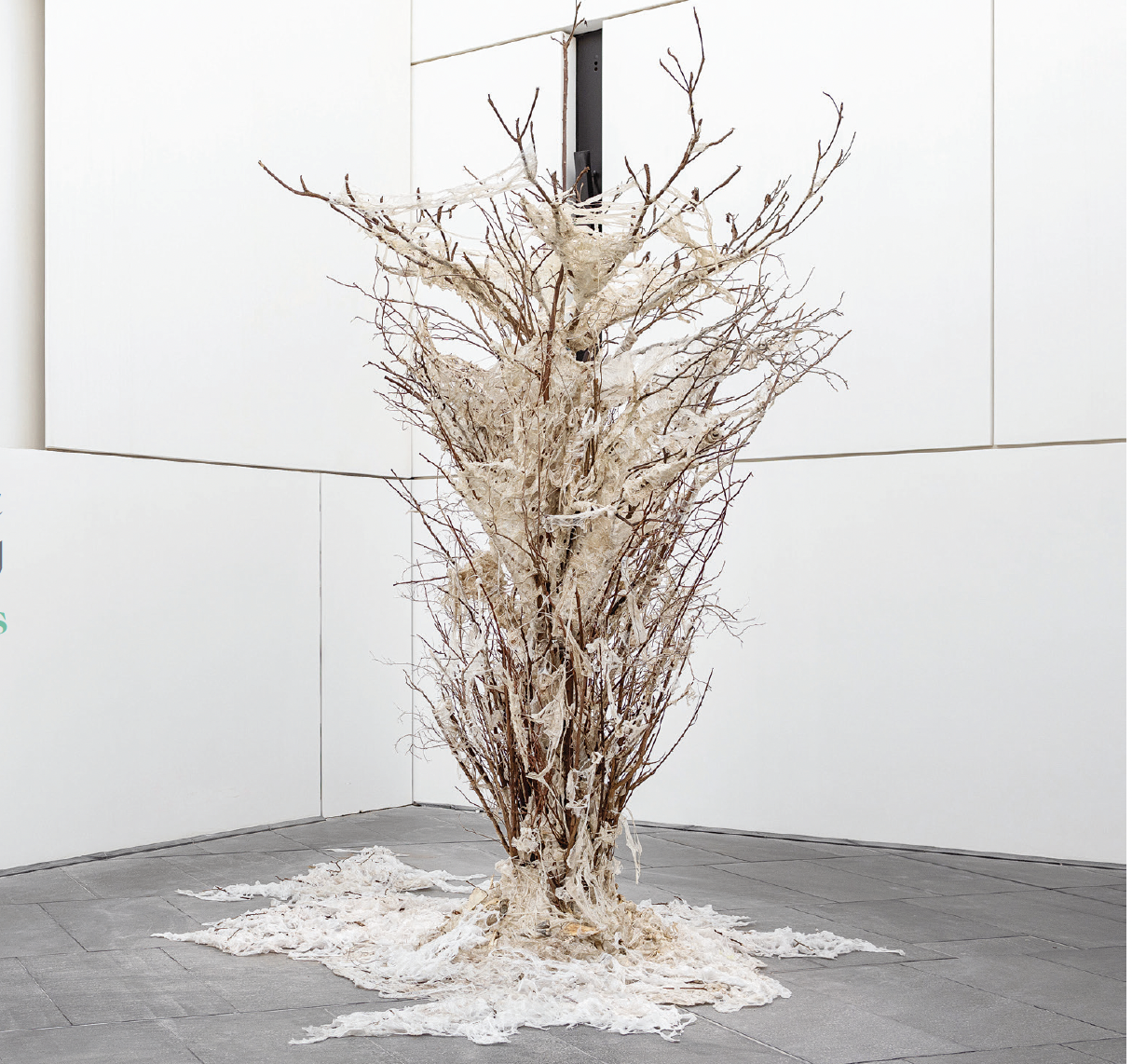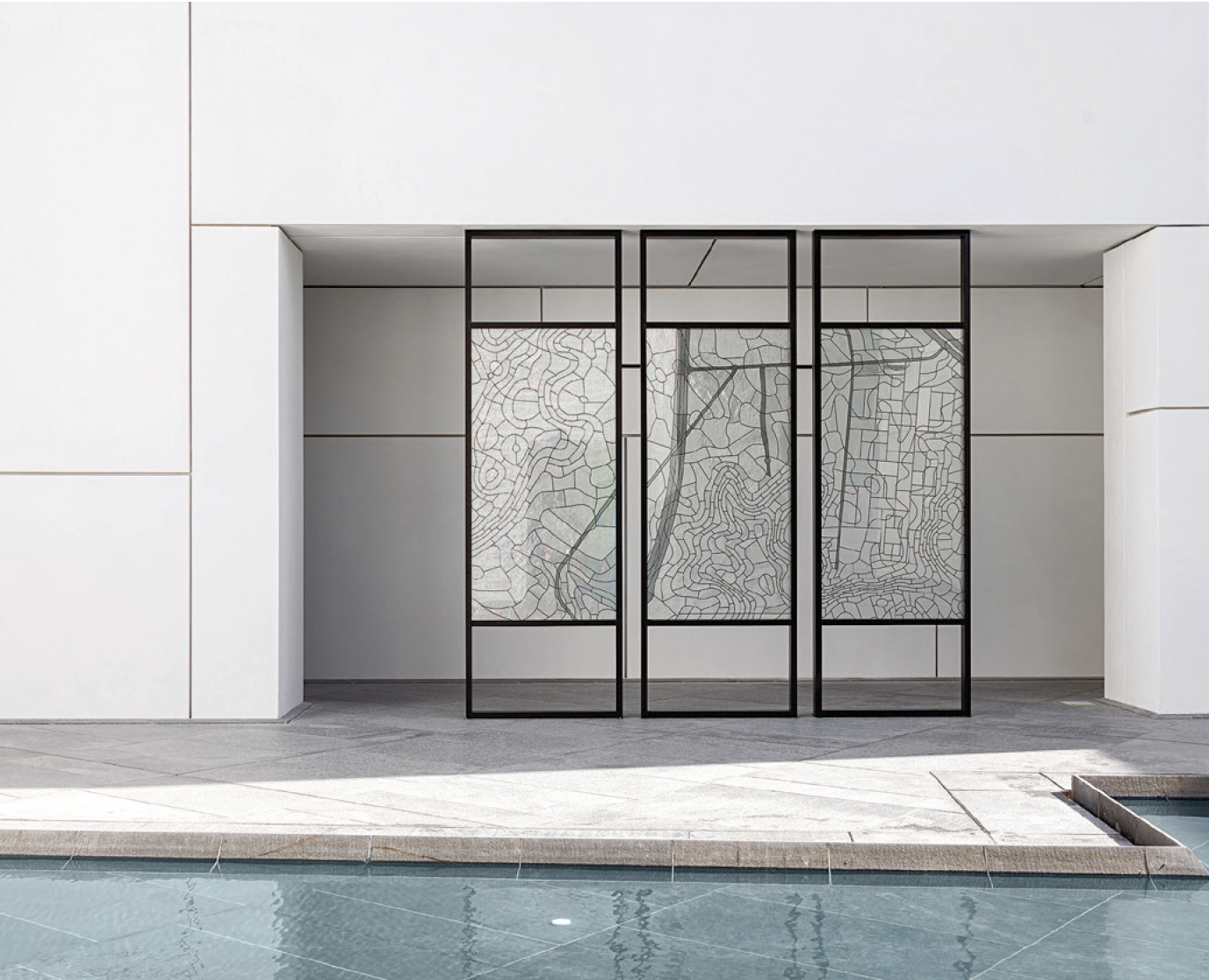Transparencies of Material, Culture, and History: The Richard Mille Art Prize Opens Conversations on the Ways We See
Zahrah Al Ghamdi, Anthropocene's Toll A Planet Asphyxiated. Image courtesy of Richard Mille
For the third edition of the Richard Mille Art Prize that ran until 18 February 2024, seven artist works from eight artists were showcased at Louvre Abu Dhabi for Art Here 2023. .The application was open to all GCC residents and nationals and is part of the Richard Mille brand’s commitment to the progression of contemporary art. The prize is part of a 10-year agreement between the museum and the luxury watch brand reinforcing the bond between visual and horological arts as well as championing visionary creativity and innovative perspectives on a global scale. The prize serves as a platform for support and recognition of artists committed to pushing the boundaries of contemporary art and is held annually as a space of interaction and exchange.
Ths year, under the theme of Transparencies, the artists addressed symbolic, atmospheric and the material meanings of the curated theme. Hailing from across the region, the artists were Hashel Al Lamki from the UAE; Zahrah Al Ghamdi from Saudi Arabia; Farah Behbehani from Kuwait; Sarah Brahim from Saudi Arabia; Syrian-Palestinian siblings Sawsan and Bahar Al Bahar; Alaa Tarabzouni from Saudi Arabia and UAE resident and Indian artist Nabla Yahya.
Alaa Tarabzouni, Remember to Forget. Image courtesy of Richard Mille
Curated by Maya Khalil, the works were staged and installed underneath the Louvre Abu Dhabi’s iconic dome and were positioned in a way to enhance our understanding of how transparency can address qualities of truth, clarity, perspective and of narrative. Finally, one artist was selected as the overall winner of the third Richard Mille Art Prize and received USD 60,000.
Here we interviewed Maya Khalil about her selection process and the significance of such a prize on the artists’ careers.
Kindly explain the inspiration of the thematic for this year's Richard Mille Art Prize?
This year, we took inspiration directly from the unique and breath-taking architecture of Louvre Abu Dhabi itself. For the first time, the exhibition is taking place outside with artworks installed under Jean Nouvel’s ‘Dome of Light’ and that was the starting point from which the idea of ‘Transparencies’ was born.
MilleMaya El Khalil, Art Here 2023 Curator. Image courtesy of Richard MilleRichard
In what way did the architecture influence your curation?
The dome itself creates that feeling of being outside and inside at the same time. It protects but is also open to the elements and it is incredibly special with the play of shadows, light, and water. The artists responded to this directly but also beyond the literal understanding of material to enter conversations about opacity and clarity.
What were your criteria for selecting artists?
It was important for the work to address the ideas of transparencies – to go beyond the literal and to unearth themes of historical and contemporary narratives. So, we selected artists based on their conceptual narrative that was within the material but also addressed themes of heritage as well as the ecological crisis that we are going through. From a practical standpoint it was also important that these works could physically withstand the elements and could be produced respecting time frame and budget, so there were quite a few criteria to select the works.
The works are much bigger than in previous years and more experimental. It looks like each artwork was created for the space it is exhibited in. How did you select the location for each one?
The fact that you said that means that we succeeded in our goal to create an experience of feeling that the works speak to their environment. Sawsan al Bahar and her brother Bahar al Bahar for example took inspiration that emanates directly from the 18th century Damascene fountain, which is part of the Louvre Abu Dhabi’s Museum collection.Their piece Waterdust is installed as handblown glass sculptures that are placed around the fountain and reflects upon the ancient Syrian craft of glassblowing. The piece links the hands that made this fountain in 18th century and the last family of glass blowers in Damascus. It asks the audience to ponder upon what is happening to this heritage and why it is dying out. It starts a conversation with history, heritage and traditions as well as starts a dialogue with the elements. The artists recorded the movement of light through the dome and took the shape of these light puddles when they made the glass sculptures. This artwork reacts with the all the sensory aspects of water - the sound, fluidity, and transparency. So here, we see transparency in terms of material but also in terms of history and concept. Another work, by Alaa Tarabzouni, combines cartography as an objective science to depict the subjectivity of memory. In this case, her own memories of her neighbourhood that is disappearing. As a material, she uses stained glass, which is normally a sacred material to honour her memories but also to underline their temporary impermanence. In short, all the works embody the place they are in.
T] Sawsan & Bahar Al Bahar, Waterdust. [Bottom L-R] Sarah Brahim, Flesh Memory. Zahrah Al Ghamdi, Anthropocene’s Toll A Planet Asphyxiated. Images courtesy of Richard Mille
The Richard Mille Art Prize is important because it allows the possibilities for artists to create freely. They have access to funds and research as well as the time to focus on site specific work, which is especially important within this unique architecture at Louvre Abu Dhabi. Also, going through process of putting together a proposal, applying, and then being selected is an important step in the career of an artist; it enhances their practice.
How important do you see the Richard Mille Art Prize for artists in the region and why do you think brands like Richard Mille need to be activating and championing regional art?
The Richard Mille Art Prize is important because it allows the possibilities for artists to create freely. They have access to funds and research as well as the time to focus on site specific work, which is especially important within this unique architecture at Louvre Abu Dhabi. Also, going through process of putting together a proposal, applying, and then being selected is an important step in the career of an artist; it enhances their practice. In general, artists need recognition, and their concepts to be made public, and this is where Richard Mille comes in as an enabler for these artists to get that extra recognition they deserve. To be enabled with such visibility and to engage in a dialogue allows their voices to be heard – which is invaluable for us all.




